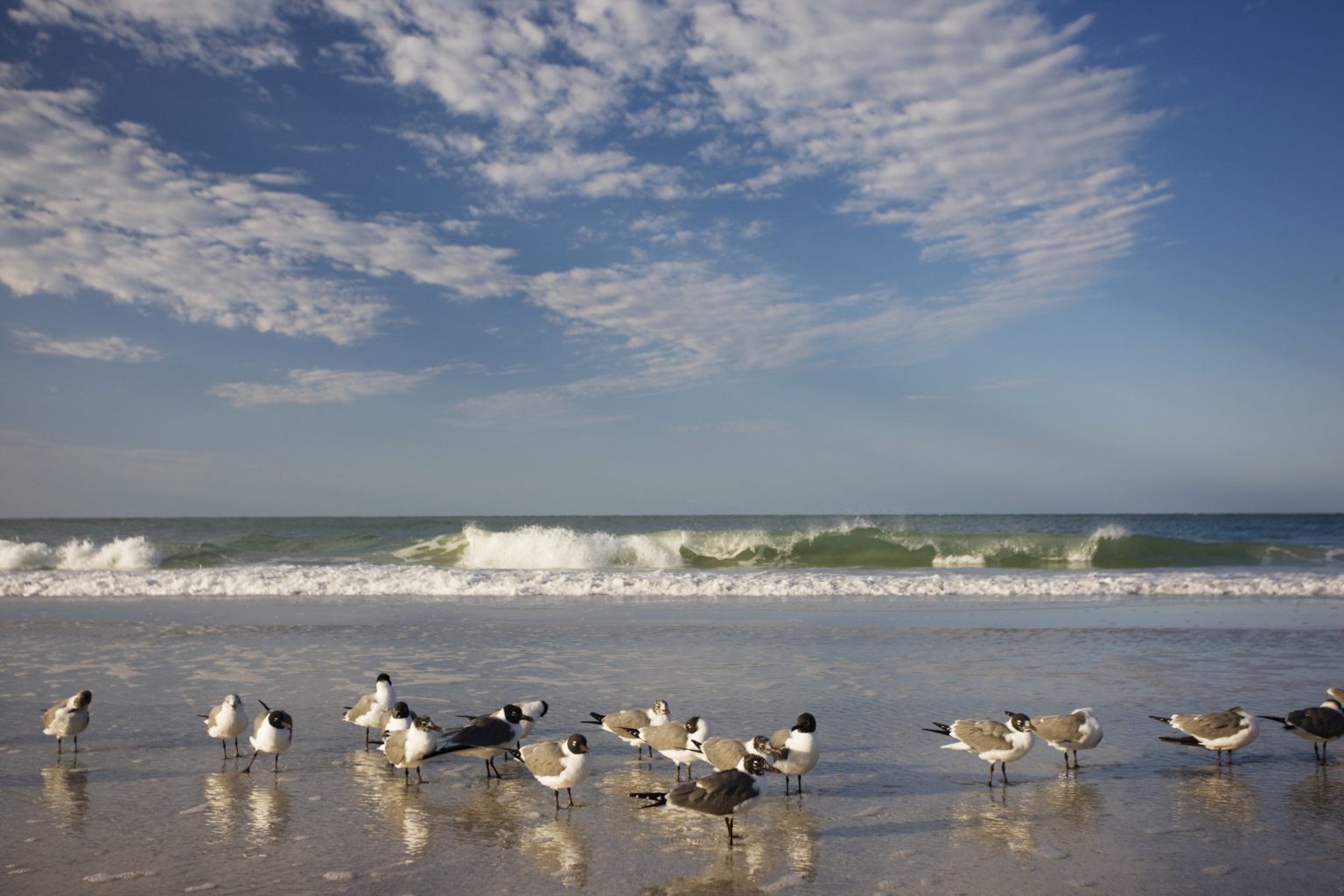An unusually high number of birds have been reported washing ashore in Florida as the state faces stormy weather conditions that may endanger local wildlife. According to veterinarian April Greer of the Florida Wildlife Hospital, a significant number of dead and injured birds have been found on Florida beaches in recent days. Greer speculates that strong winds could be a contributing factor to the influx of birds washing ashore, with 76 birds reported within the last 48-72 hours. These birds, known as pelagic birds, typically spend their lives flying over water, making their appearance on land detrimental to their well-being. Greer mentioned that she does not believe the birds have contracted avian flu and plans to conduct necropsies on all of them to determine the cause of their deaths if officials from the Florida Fish and Wildlife Conservation Commission do not step in.
Beachgoer Michael O’Meally noted that while a small number of dead birds might typically be seen on beaches after storms, he recently observed an unusually high number of birds washing ashore. O’Meally explained that the winds during storms can disrupt birds’ flight patterns and the rough water can affect their ability to find food, ultimately causing them to wash up on shore in an exhausted state. The Florida Fish and Wildlife Conservation Commission has been contacted for comment on the increase in bird deaths and injuries, and the potential impact of weather conditions on the situation, as a tropical disturbance off Florida’s Atlantic coast is expected to exacerbate the situation. The National Hurricane Center has predicted a 60 percent chance of the system forming into a tropical storm, leading to various warnings such as high surf advisories, small craft advisories, rip current statements, and warnings for inexperienced swimmers to avoid impacted waters.
The recent surge in bird deaths and injuries washing ashore in Florida is occurring amidst a backdrop of heavy rainfall and flooding experienced earlier in the month in various parts of the state. Governor Ron DeSantis declared a state of emergency as some communities faced record-breaking floods, leading to evacuations of residents from their homes. While stormy weather may play a role in birds washing ashore, it is noted that most birds are capable of navigating around storms or seeking shelter during severe weather events. Audubon Florida has observed seabirds successfully flying through hurricanes on occasion, highlighting the adaptability of these birds to extreme weather conditions. In a unique occurrence, Hurricane Idalia caused a temporary increase in Florida’s flamingo population as migratory birds were blown off course and into the state by the storm.
The unusual number of birds washing ashore in Florida has raised concerns about the impact of stormy weather conditions on local wildlife. Veterinarian April Greer emphasized that the influx of birds, particularly pelagic birds, coming inland can be detrimental to their health, as they are not accustomed to living on land. She expressed plans to conduct necropsies on the birds to determine the cause of their deaths if the Florida Fish and Wildlife Conservation Commission does not intervene. A beachgoer reported seeing a higher number of dead birds on the beaches recently, attributing their deaths to the disruption of flight patterns and food availability caused by stormy weather. With a tropical disturbance off Florida’s coast expected to worsen the situation, various warnings have been issued, urging caution in the affected areas, including advisories for high surf, small craft, and rip currents.
The surge in bird deaths and injuries in Florida is occurring against the backdrop of heavy rainfall and flooding experienced in the state earlier in the month, prompting a state of emergency to be declared by Governor Ron DeSantis. While stormy weather may contribute to birds washing ashore, most birds have the ability to navigate around storms and find shelter during extreme weather events. Audubon Florida has observed seabirds successfully flying through hurricanes, demonstrating their adaptability to challenging weather conditions. In a unique occurrence, Hurricane Idalia led to a temporary increase in Florida’s flamingo population by blowing migratory birds off course and into the state.


